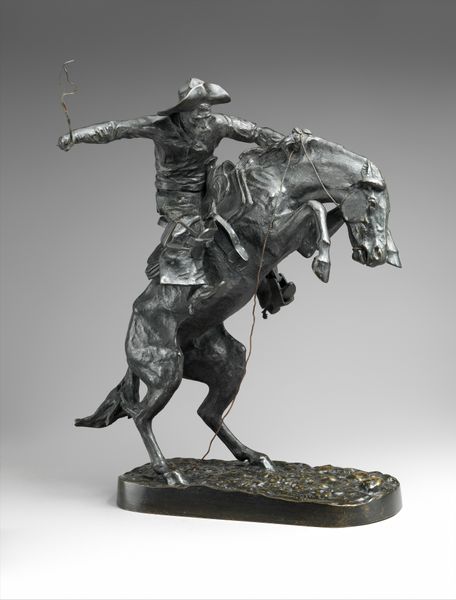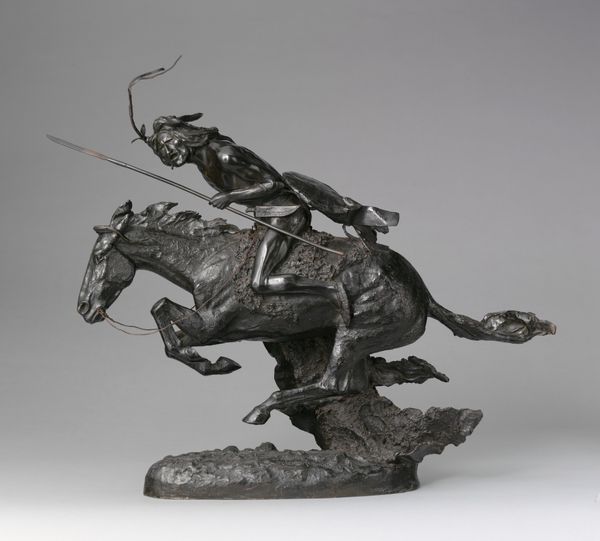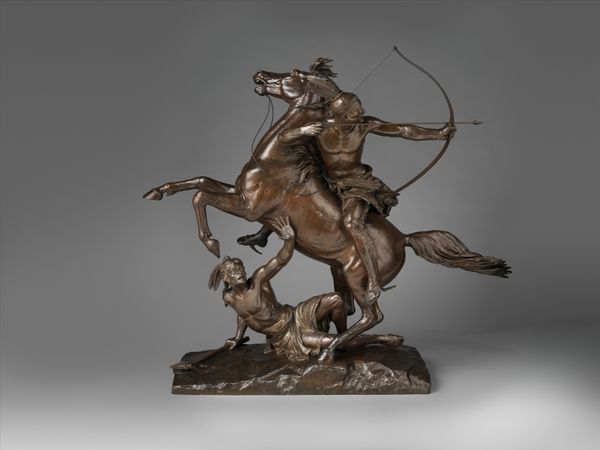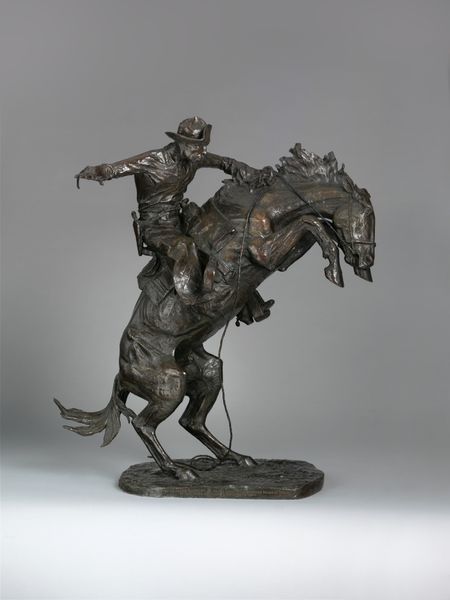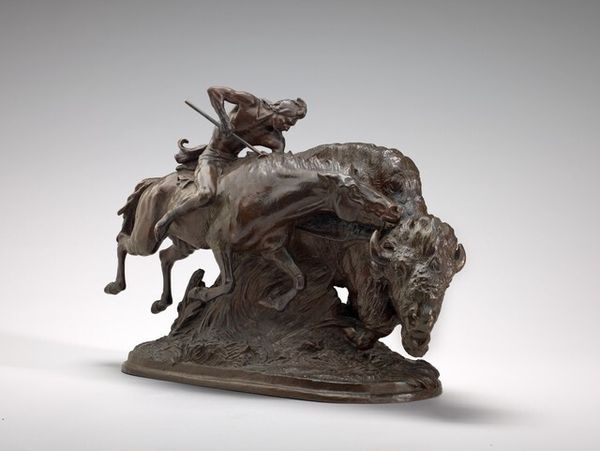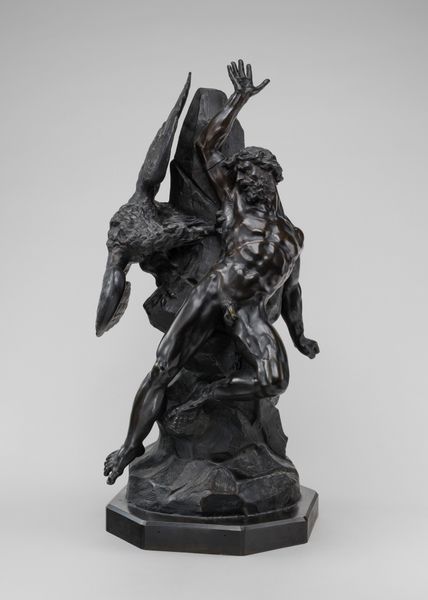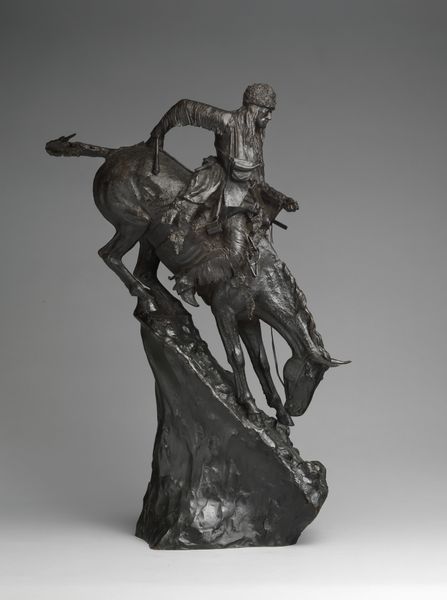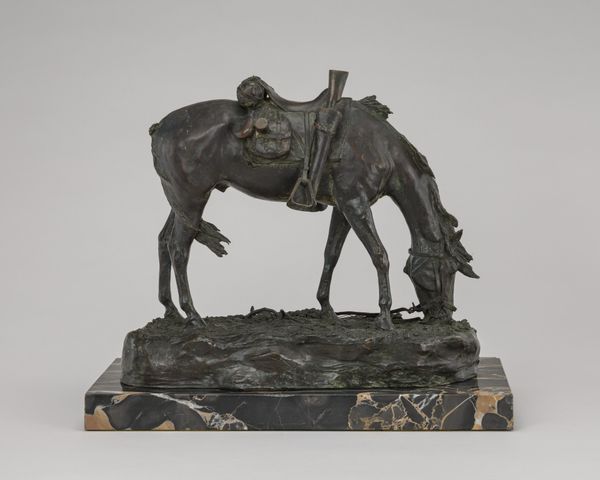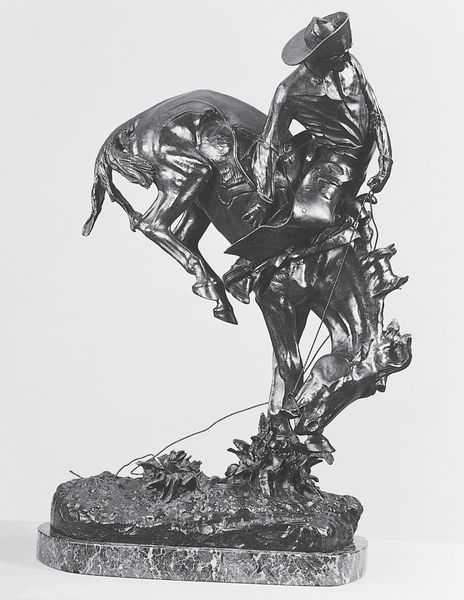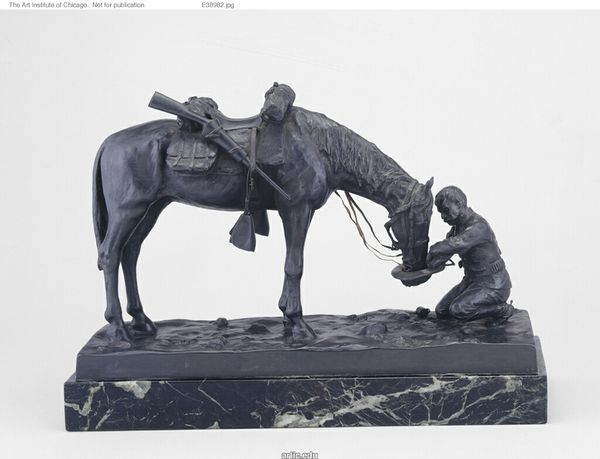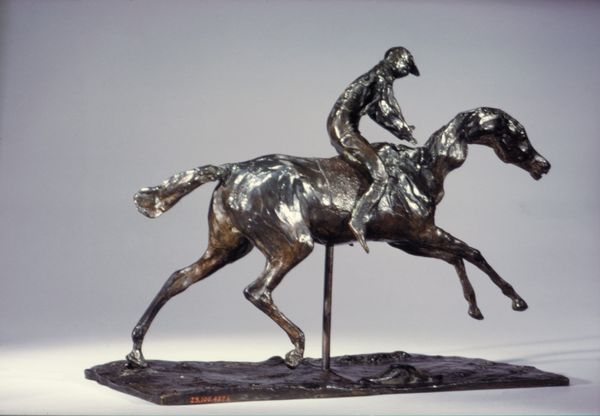
bronze, sculpture
#
sculpture
#
bronze
#
figuration
#
sculpture
#
united-states
#
genre-painting
#
realism
Dimensions: 61 × 43.2 × 33 cm (24 × 17 × 13 in.)
Copyright: Public Domain
Editor: Here we have Frederic Remington's bronze sculpture, "The Rattlesnake," dating roughly from 1905 to 1918. There’s an incredible sense of action and tension; you can almost feel the horse's panic. What stands out to you in this piece? Curator: The drama certainly leaps out. Remington has captured a pivotal moment, hasn't he? This work isn't just about a cowboy and a horse; it evokes something much older. Notice how the horse rears back – an instinctive fear response. Consider the serpent as a symbol - in many cultures, it embodies chaos, danger, and a disruption of order. Editor: So, you see the rattlesnake as representing something beyond just a literal threat? Curator: Precisely. Think of the Garden of Eden, of primal fears. The cowboy’s reaction, his desperate grip, is almost secondary. Remington is tapping into this deep-seated, almost universal recognition of unseen, hidden danger disrupting the perceived harmony of the world. And in early 20th century America, wasn't there a palpable anxiety about disrupting old ways of life and encountering hidden threats? Editor: That makes so much sense! It is so interesting how Remington uses this simple encounter to symbolize greater anxieties. The sculpture’s dynamism creates a lasting impression. Curator: Indeed, and the snake has an iconographic connection through centuries. Understanding its presence in this sculpture helps us decode how Remington's art speaks across time. I see something new every time I examine the emotional potency conveyed in its enduring symbols.
Comments
No comments
Be the first to comment and join the conversation on the ultimate creative platform.
